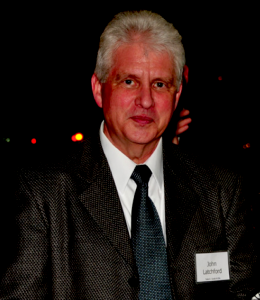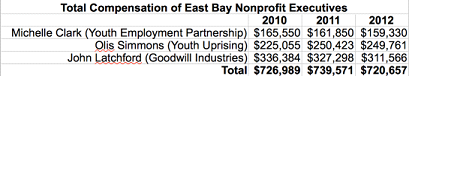
By Darwin Bond Graham
Nonprofit corporation executives are among of the most adamant opponents of raising the minimum wage in Oakland, California.
A ballot initiative spearheaded by labor unions and community organizations to raise Oakland’s minimum wage from $9 an hour to $12.25 next year was criticized in the San Francisco Chronicle by several nonprofit leaders who fear that the law will cut back the reach of their job-training programs. Michelle Clark of the Youth Employment Partnership said the minimum wage increase will force her organization to scale back their job training program by 30 spaces. “That’s going in the wrong direction,” Clark told Will Kane of the Chronicle.
Olis Simmons and John Latchford, the leaders of Youth Uprising and Goodwill Industries of the East Bay, respectively, voiced similar concerns.
These nonprofit executives are essentially objecting to raising the pay of their employees from $18,720 in yearly pre-tax earnings to about $25,480, an increase of roughly $6,700 per employee.
But what do Clark, Simmons and Latchford make in a given year? How much does their employment cost their organizations?
According to IRS filings, in 2012 the Youth Employment Partnership paid Michelle Clark $159,330 in total compensation. That’s equivalent to the pay of eight minimum-wage workers.
Olis Simmons of Youth Uprising had a paycheck and benefits equal to $249,761, or 13 minimum wage workers.
And John Latchford of Goodwill Industries is among the highest paid nonprofit executives, taking home $311,566 in salary and benefits in 2012.
Another way of looking at the math of a minimum wage increase, one that focuses not just on the pay of those at the bottom of the economic hierarchy, but also those at the top, is as follows: Under the current minimum wage of $9 an hour, or $18,720 per year, these three nonprofit executives combined are paid as much as 38 of their lowest wage employees. If Clark, Simmons and Latchford have to raise wages to $12.25 an hour, their compensation would drop to an amount equal to the total pay of about 28 of their minimum wage workers.
I break the math down this way because the debate about the minimum wage is centrally about inequality. Few things are certain about the impact of raising the minimum wage. But one certain impact is that income inequality in Oakland would be significantly reduced.
Under the current minimum wage, the ratio of John Latchford’s compensation to that of a minimum wage worker is 16:1, that is, Latchford makes 16 times more than a minimum wage worker does. Under a $12.25 minimum wage Latchford’s ratio over the lowest paid workers drops to 12:1. That’s a far from the commanding heights of the U.S. economy where the CEOs of global corporations pay themselves hundreds of times more than their average employee, but it’s still a very unequal economic structure that could be addressed if Oakland passes a significant minimum wage increase.





